DISCOVER An elegant, storied city waiting in the wings
DEEP ROOTS
Originally named Bergomum, which literally means a mountain (berg) with a house on top (heim), the picturesque city on a hill is built on Celtic remains. From Romans, Lombards to the Venetian Republic, there is a rich layering of influences, ages and cultures that pervade this ancient city divided between an upper and lower town.
Citta’ Alta or Upper City in Bergamo
TAKE THE HIGH ROAD: CITTA’ ALTA
Connecting the two distinct neighbourhoods is the San Vigilio Funicular, which is 128 years-old and travels at a 52% slope, offering inspiring views from unique vantage points. Citta’ alta is the charming medieval part of Bergamo encircled by 16th century Venetian walls soaring 50 metres high in areas. Declared a UNESCO World Heritage site in 2017, one of the many cultural acknowledgments Bergamo Mayor Giorgio Gori took under his wing to enhance the city since elected consecutively in 2014 and 2019. The Venetian walls have four gates: Porta San Lorenzo, Porta Sant’Agostino, Porta Sant’Alessandro and Porta San Giacomo. The gates were all named, after neighbouring churches, except for the Porta Sant’Agostino. Built in 1561 by the Republic of Venice, a defensive fortification prepared to face enemy attacks, the city never underwent any type of siege, which is probably why they have remained almost intact to this day.
Porta San Giacomo is one of the four Venetian gates of the Città Alta in Bergamo. This is the southern entrance to the city,
You can choose to ascend onto upper Bergamo by foot provided you’re wearing proper shoes. You can start your climb at several different points; the most scenic is the old stone staircase to the left of the Bergamo Funicular. The stairs will lead to a ramp that takes you through the famous San Giacomo Gate (Porta San Giacomo) that used to be the entrance to Bergamo for those who came from Milan. However you choose to get there, the panoramic views of the lower town and countryside are stunning.
Cobblestone alleys, countless Roman ruins, Renaissance churches and neo-classical facades overlook Piazza Vecchia, built on the site of the ancient Roman forum. It’s a romantic setting that beckons to stop for un gelato alla stracciatella at the historic Pasticceria La Marianna, where the flavour was invented in 1961.


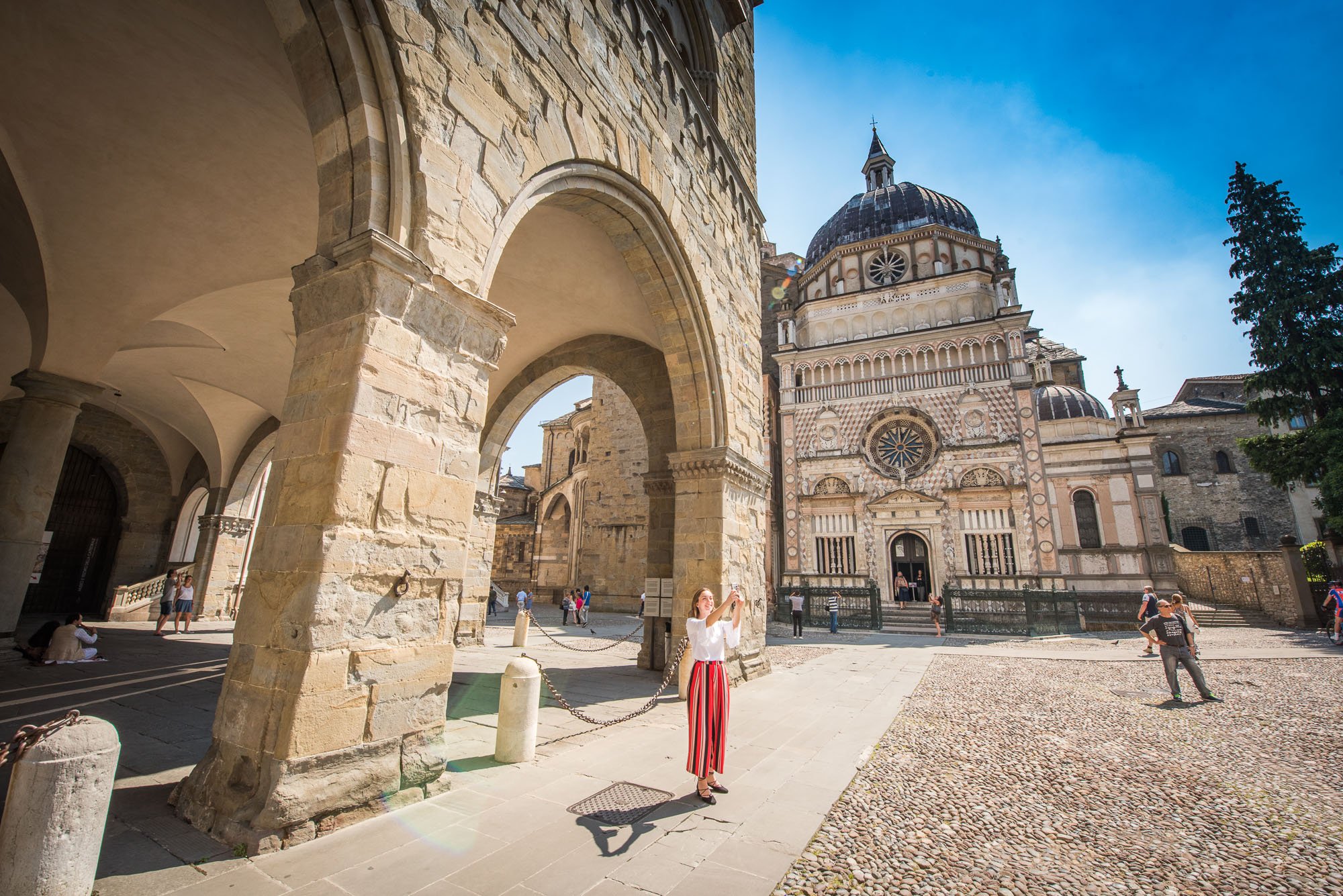
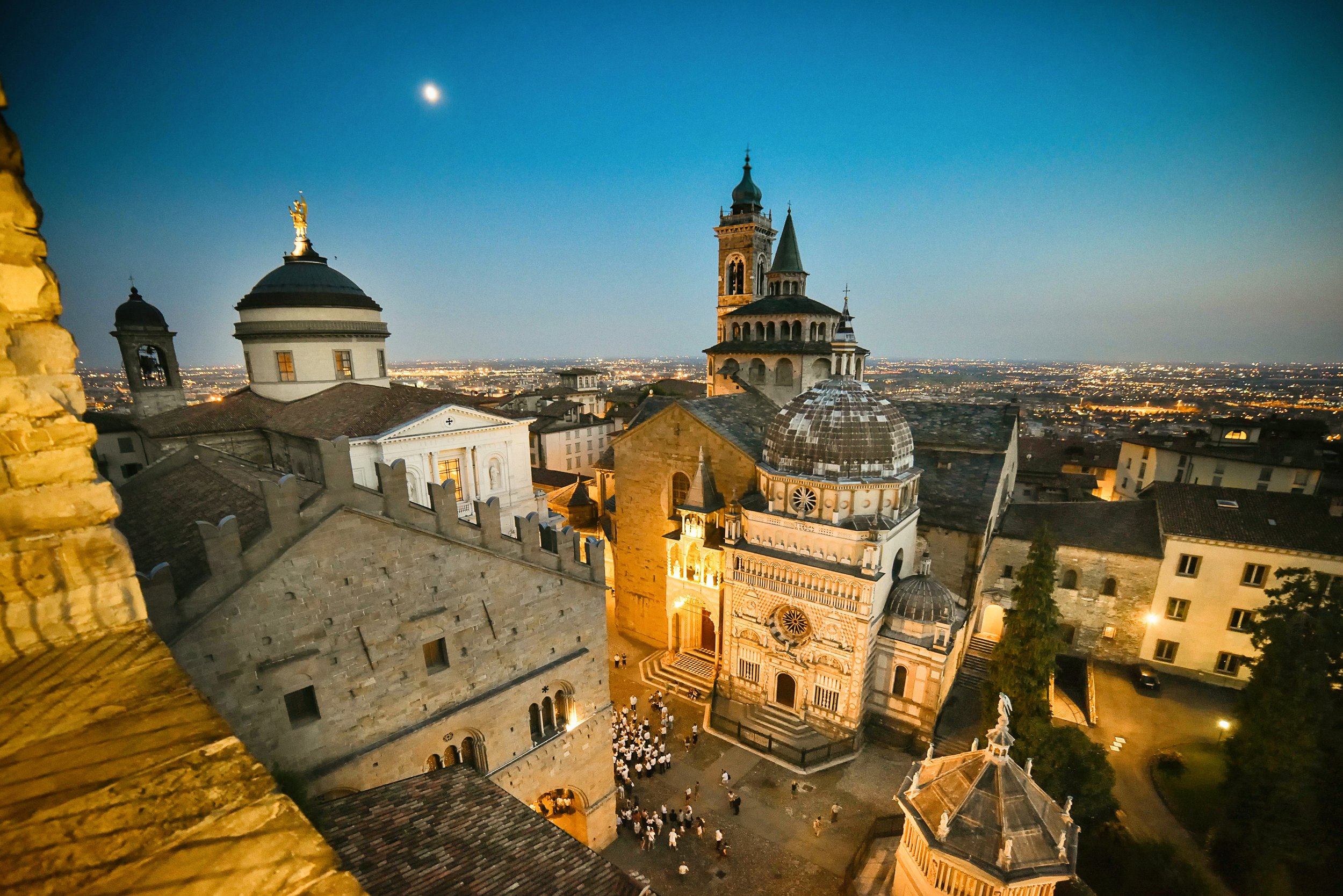
Just north of there is Palazzo Nuovo, which houses the Angelo Mai Library, designed in the early 17th century and completed in 1958. Don’t miss the Venetian-Gothic marvel, Palazzo della Ragione, a former townhall turned courthouse as far back as the 12th century. Just behind it is Piazza Duomo, where you will find two important churches: Bergamo Cathedral and the opulent Basilica di Santa Maria Maggiore. In the same piazza, there’s the Colleoni Chapel (Cappella Colleoni) which houses the mausoleum of Bartolomeo Colleoni (1400-1475), an important captain-general for the Republic of Venice and one of Bergamo’s most beloved figures. Be sure to reach the highest point of upper Bergamo and visit La Rocca, a fortress which began construction in the 14th century, but was interrupted many times by war. The building-turned-museum recounts the important role that the citizens of Bergamo played in helping Garibaldi unify Italy during the Risorgimento, giving Bergamo the name: La Citta’ dei Mille (City of the Thousand).
La Rocca is a 14th century fortress turned into a museum in the 19th century. Exhibits include the telling of the stories of 180 Bergamaschi who joined Garibaldi in the heroic undertaking of unifying Italy.
THE AVENUES & MUSEUMS OF THE LOWER CITY:
CITTA’ BASSA
While Bergamo alta is usually seen as the main draw for tourists, Bergamo bassa also has plenty of charm and continues to tell the story of this unique two-tiered city. Start by walking on Via Roma towards Porta Nuova; a pair of colonnaded, neoclassical buildings dating from the 1830s used to mark the official gateway to the town. The ancient centre of the lower city is made up of hamlets: San Leonardo, Pignolo and Santa Caterina. The Sentierone is a popular walkway which has been the Bergamasco meeting place since the 17th century, complete with porticos and chestnut-tree-lined piazzas. You can also admire the so-called quadriportico, an elegant arcade adorned with marble decorations and full of refined shops and cafés. On the opposite side there is the Donizetti Theatre, dedicated to Bergamo’s greatest music composer: Gaetano Donizetti. Cross the street and go to another beautiful square, Piazza Vittorio Veneto: here stands an obelisk dedicated to Napoleon, along with the Torre dei Caduti—the War Memorial Tower.

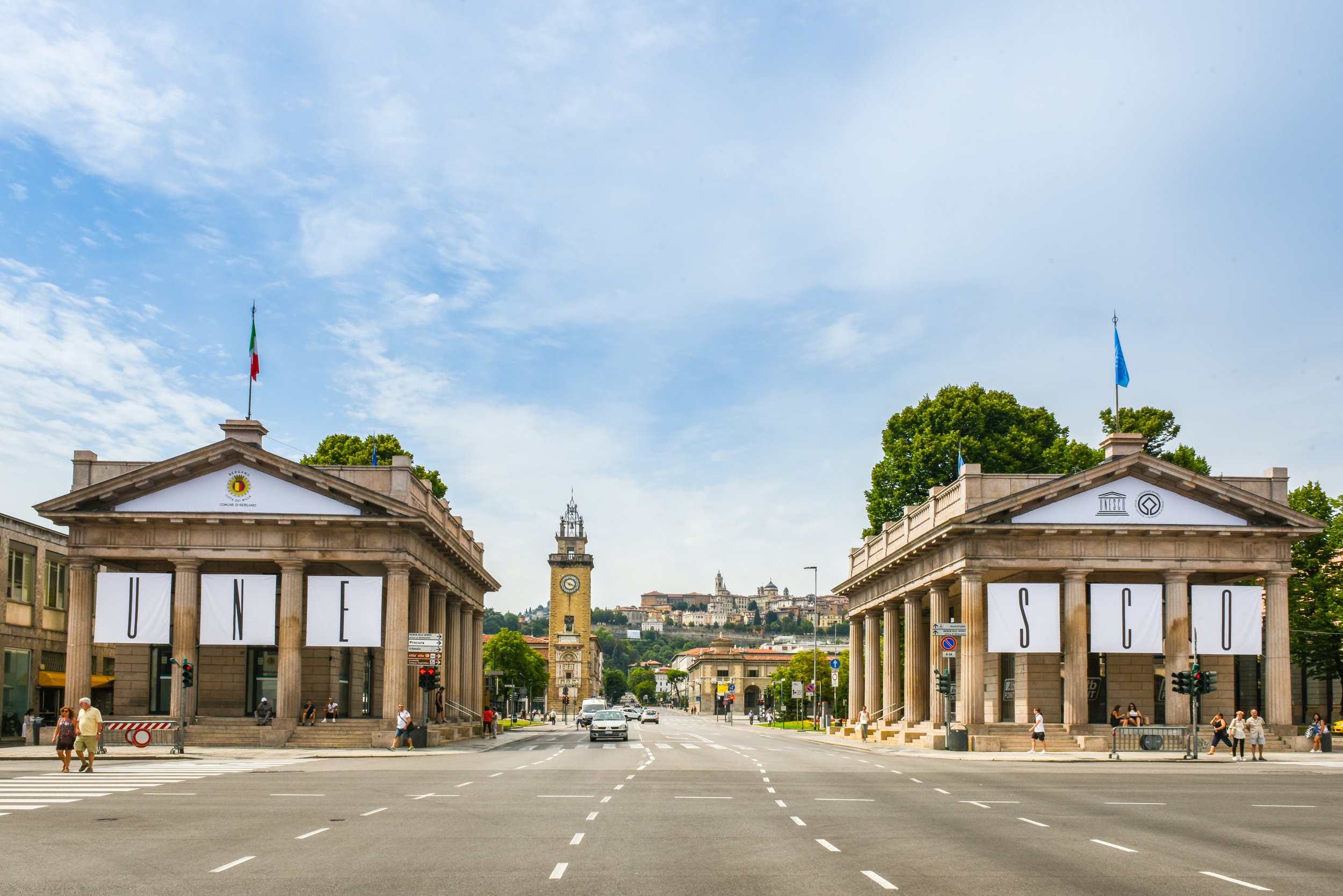
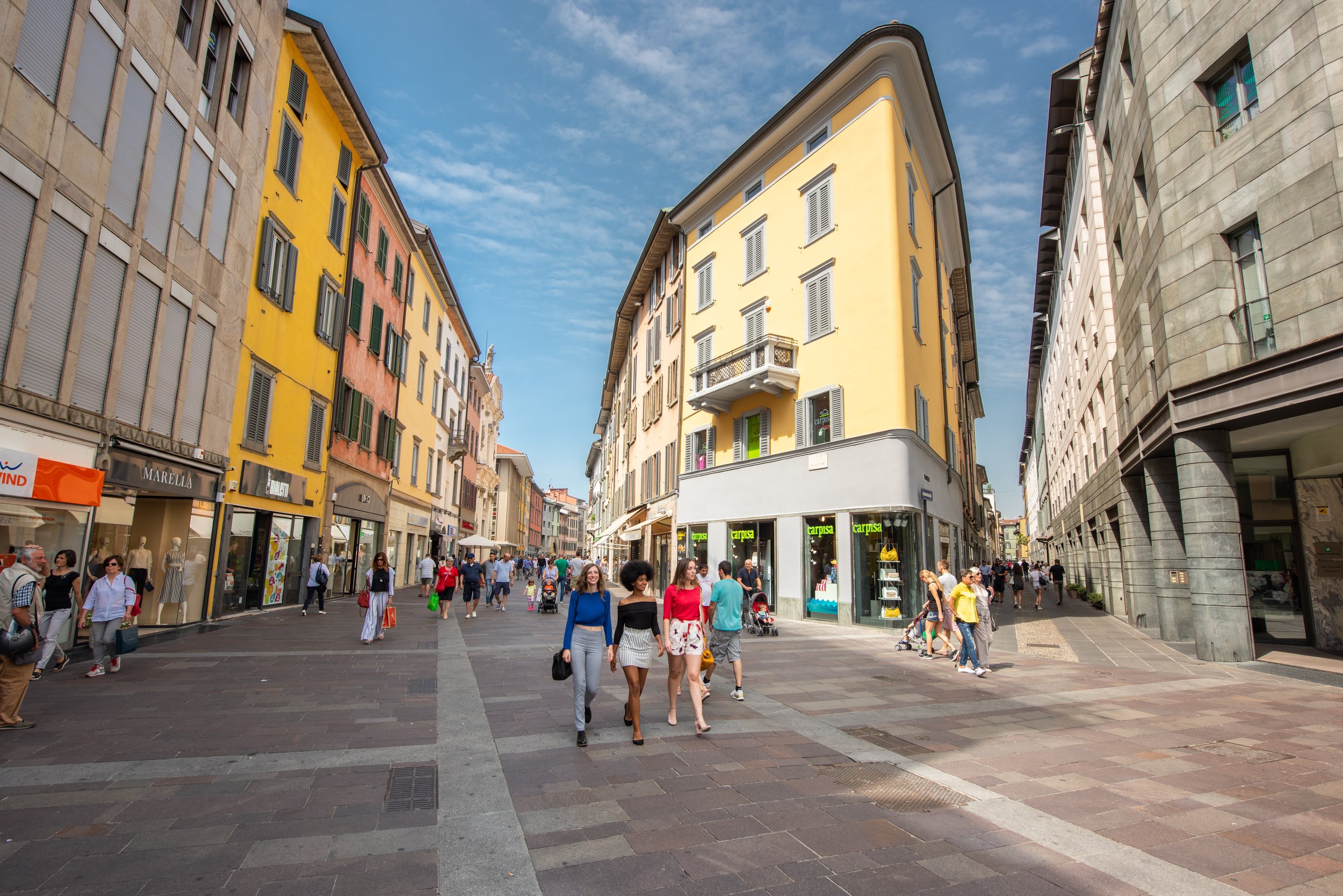
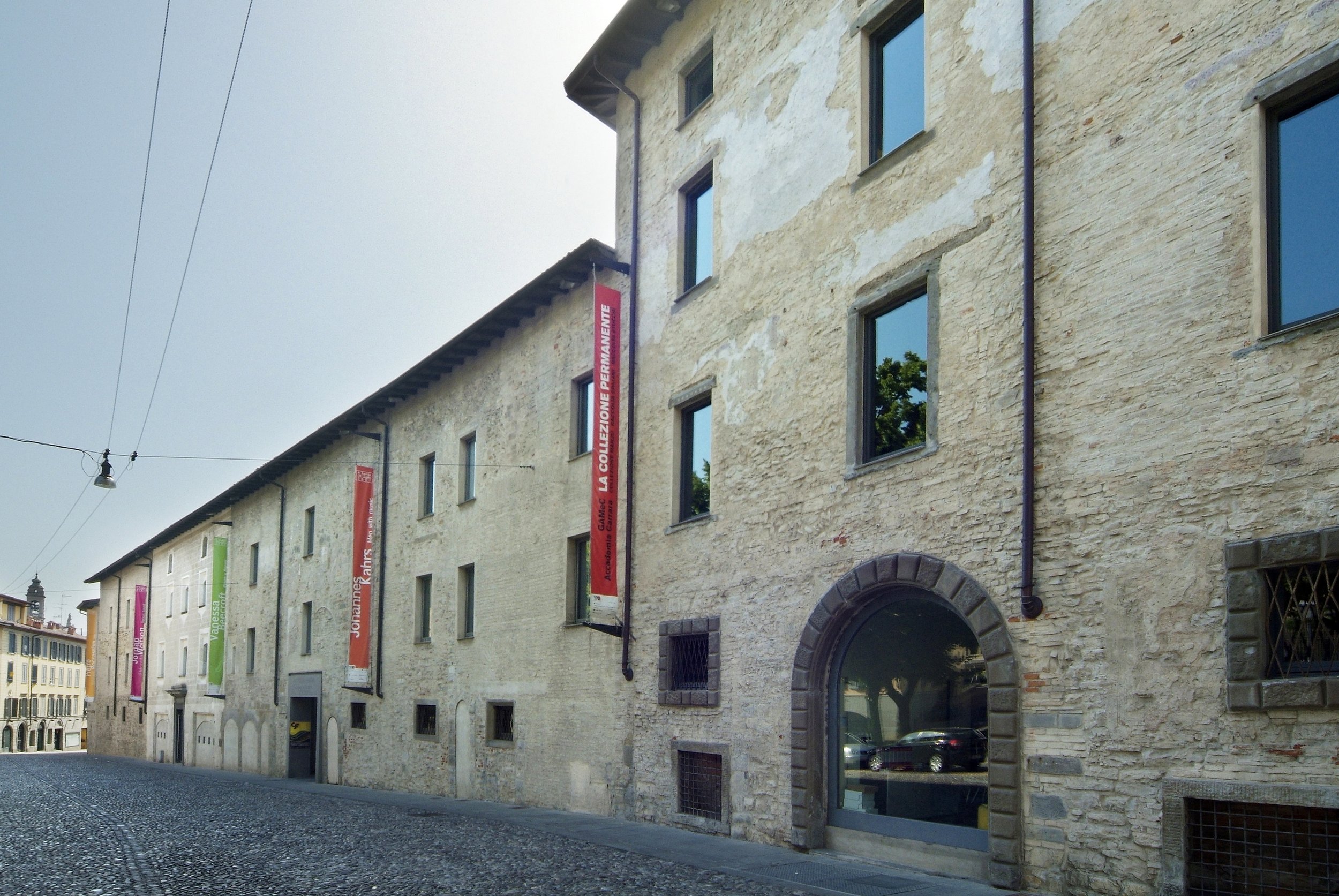
One of the most popular repositories of masterpieces in Italy, the Accademia Carrara is home to medieval and Renaissance canvases by Raphael, Botticelli, Titian, Canaletto and Mantegna. Located just outside the ancient walls to the city, the gallery is a must for art aficionados. For modern and contemporary art lovers, check out GAMeC Galleria d’Arte Moderna e Contemporanea .
A panoramic view of Bergamo and the Alps that surround the ancient city
Photo by Fabio Toschi
For More Information, Visit Bergamo
BANNER IMAGE IS TEATRO GAETANO DONIZETTI





